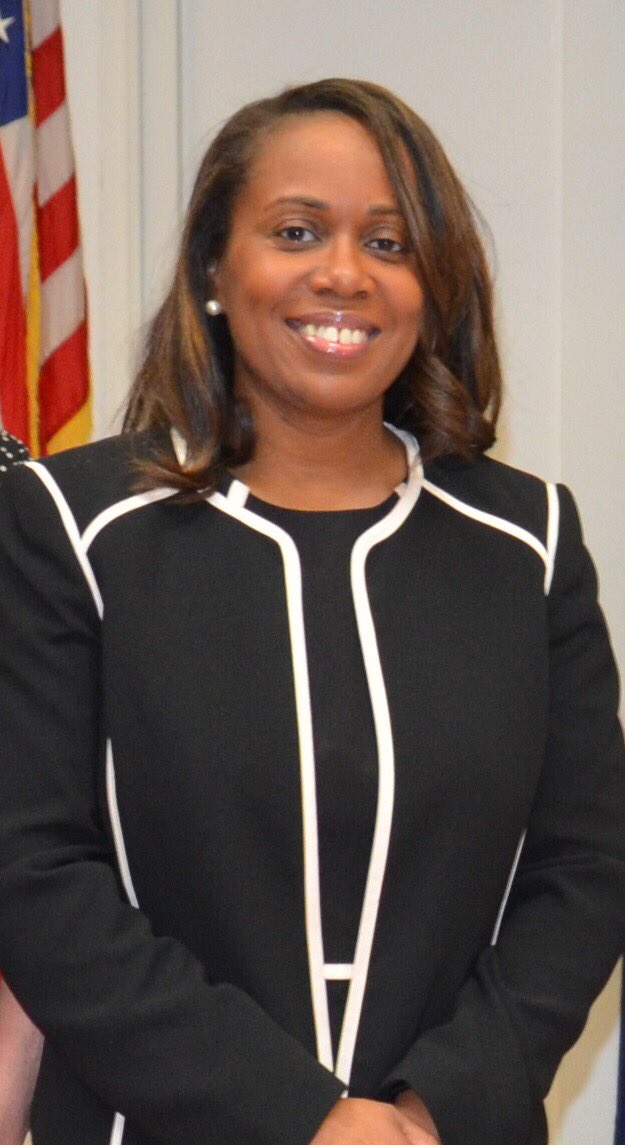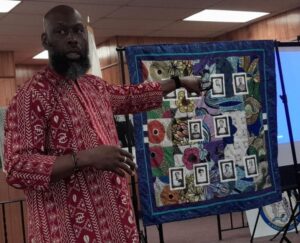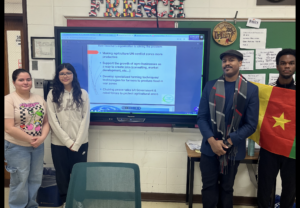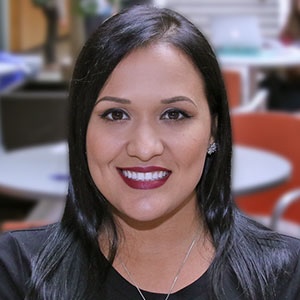Camden Schools Take on Digital Divide Test During Pandemic

This story was produced thanks to a reporting grant facilitated by the Center for Cooperative Media at Montclair State University and funded by New Jersey Children’s Foundation.
By Clyde Hughes | AC JosepH Media
CAMDEN — According to Katrina McCombs, superintendent of Camden City Schools, the coronavirus pandemic and its restrictions did not cause a digital divide among the students and community, it just revealed it more.
Camden City Schools, where more than 90% of the student population are Black or Latino, families have a median income $33,120, well below the $73,672 median income for the rest of Camden County.
McCombs said she knew when schools were ordered closed because of the coronavirus, her school district faced significant challenges in learning virtually. A previous study told district officials that less than one-third of students had access to reliable Internet connectivity, making even the most basic instruction online impossible.
According to McCombs, that is when generous philanthropists stepped forward to assist them.
READ: Why I Serve — Shirley Irizarry
“As you know, the digital divide for communities of color existed before the pandemic hit and the pandemic just shone a light, and really amplified as well, how large that divide is,” McCombs said. “We were able to receive $400,000 from different philanthropic organizations wanting to make sure that our high school students had devices.
“We were able to purchase devices for all of our 9th through 12th grade students at the very beginning of the pandemic. Shortly thereafter, we were able to utilize our title funding, in order to purchase devices for our K through 8th grade students. Since then, we’ve also been able to purchase devices for our pre-K students,” the superintendent said.
“We are just so grateful that our community organizations and philanthropists rallied around the district to help us to close that initial divide. Then, and then again, we were also able to work with the Department of Education, to repurpose our title bonds so that we could reach our goals,” McCombs added.
Getting students the computers they needed to access the Internet was merely the first challenge. The next hurdle was finding ways for them to connect with networks so they could reach teachers and obtain their work.
Family Operations Coordinators
She said that’s where family operations coordinators came in. The coordinators, a position in Camden City Schools, act as a link between homes and each school. They quickly became the eyes and ears of parents and students who lacked the Internet needs to connect with teachers and their new virtual classrooms.
“[The family operations coordinators] were very, very instrumental in helping us to provide our families with resources like Internet essentials, with support and how to sign up for discounted Internet connectivity from different corporations of allies like Comcast and Xfinity, etc.,” McCombs said.
“So we had kind of like a hodgepodge approach, where we took philanthropy, we took funds that we did have at our disposal and also worked with corporations through those discounted programs to really help to close that digital divide. Those were some of the key intentional actions the district took,” she said.
McCombs said that connection with parents have allowed them to establish Internet “hot spots” in locations that lacked previous service and could benefit the most students and families.
“When we think about educating the whole child, we know the pandemic really has made it difficult for educators to connect in the ways that they typically would, even though we’ve done everything possible, to use remote learning tools and techniques to keep students and the odd students engaged,” McCombs said. “I can say the hotspots have just helped us make sure that families are able to stay connected to what’s happening in the district. It’s been really important for families to be able to connect to some of those hotspots that we provided.
“When it comes to group interaction or interaction between our young people, we are able to help, of course with connectivity, but we’re also able to provide monitored, group interactions and engagement. Our classroom teachers, especially in the high school grades, are able to connect students from one classroom to another. To do group projects, we were still able to have those taken-care-of cooperative learning experiences,” she added.
Silver Linings
While Camden Schools worked hard to eliminate the digital divide at its schools, McCombs said the experience has revealed some silver linings and also revealed things that are possible through virtual learning. She said once things return to “normal,” there will be several aspects it will keep.
“Every student in our district has a device they can utilize and that was a goal of ours prior to the pandemic,” McCombs, said. “The pandemic rapidly accelerated that goal. Another is when we have snow days, weather events or other reasons students have to miss school. Now we have the ability to keep learning to move forward without any disruption.
She said students who must leave the classroom on medical leave or other reasons can now stay connected and remain engaged with classroom instruction during their experience of the pandemic.
McCombs said another lesson the district learned was that some students excelled during remote learning because some of the districts that came into play in the classroom environment were no longer a factor. While admitted virtual learning was not for everyone, some students appear to accept instruction better.
“It was interesting to see that for some young people it was a preferred method,” McCombs said. “Some of our students who are gifted and talented, they were able to, in many ways, offer some individualized instruction, and that’s something we’ve been able to explore. So there’s lots of positives that have come out of this as well.”
Opportunities in STEM education
Another benefit is that the use of technology has helped spark an interest in the STEM field, said Pastor Keith Davis, president and founder of the Camden Dream Center Technology Training School.
Since 2010, the Camden Dream Center provides STEM education to students in Camden and throughout South Jersey of all ages, preparing them to enter the world of fast-paced information technology and the “Internet of Things (IoT)” workforce.
“The kids that we serve at CDC are experiencing exposure to digital tools and processes that’s created more interest in technology and not less,” Davis told Front Runner New Jersey. “COVID-19 has accelerated their need to learn new things that’s digital and they are adapting.”
The Camden Dream Center offers programs like Kids N’ Camden Code, Innovate Literacy Lab, and its own Camden Hackathon. The center also collaborates with local school districts to deliver virtual enrichment programs and educational summer camps. Camden Dream Center also provides I.T. certifications through Cisco Networking Academy.
While young people have found challenges in the digital divide exposed by the pandemic, silver linings continue to emerge as well.
Follow Us Today On:
Note from AC JosepH Media: If you like this story and others posted on Front Runner New Jersey.com, lend us a hand so we can keep producing articles like these for New Jersey and the world to see. Click on SUPPORT FRNJ and make a contribution that will do directly in making more stories like this available. Thank you for reading.






